Places Visited: Wyoming: Yellowstone National Park
July 30 through
August 5, 2006: Colter Bay Village Campground in Teton National Park near Moran,
Wyoming: N43° 54.659' W110° 38.526' $15.00 NO hookups with paved interior
roads and gravel spots. Nice, clean park and you really do not need hookups in
the summer.
We moved the motorhome from Jackson Hole to Colter Bay Village
in the northern part of Teton National Park. That entire drive was through Teton
National Park Valley, with the mighty Tetons providing a backdrop on our western
flank. A more scenic drive is hard to find.
One morning while staying in
Colter Bay we decided that we should drive to Yellowstone just because it was
so close, so that is what we did.
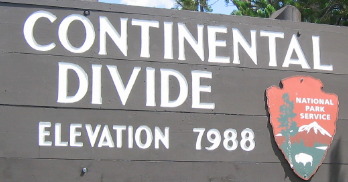
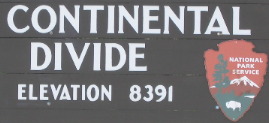
When
entering Yellowstone National Park from the south you cross over the Continental
Divide three times before arriving in the Old-Faithful area.
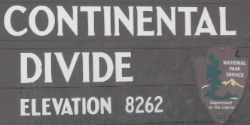
On
one of the Continental Divide crossing there was a small lake less than an acre
in size that someone had dammed up (just a small stone dam) on both sides so that
some of the lake drained to the Atlantic and out of the other side some drained
to the Atlantic. To make that happen both dams have to be the same exact elevation.
I was intrigued by the thought process someone had to make this unique event happen.
That would make a good quiz show question. Is there a body of water that drains
into both the Atlantic and Pacific? Where is it located? Yes, in Yellowstone National
park on the road (US-20) between Old Faithful & Grant Village.
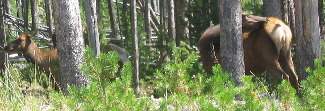
On
this trip into Yellowstone only a few Elk were visible.
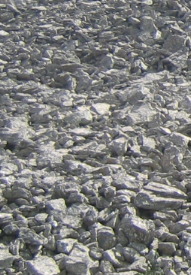
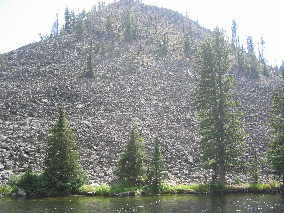
Centuries
of weathering in sun and snow cause cliffs to break up, and great piles of rocks
accumulate beneath them. These steep boulder slopes are called "Talus"
Some slowly creep downhill, by their sheer mass forming rock glaciers. These huge
rock piles provide ideal homes for small animals.
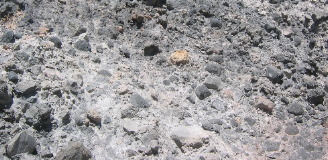
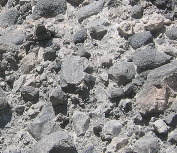
I
was fascinated by this section of conglomerate exposed in a roadcut along the
Firehole River. It looked to me like the river rocks had been "cemented"
together by either flowing lava or ash.
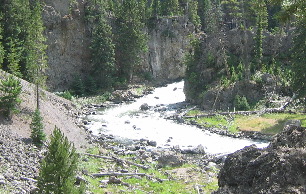

The
cliff being cut by the Firehole River is of a flood of lava in cross-section.
It may be difficult to imagine the forested Yellowstone Plateau covered with bubbling,
hissing lava, but the rocks contain the evidence. Up close, you can see that the
dark rhyolite cliff is pocked with volcanic gas bubbles. Waterfalls are further
clues. Where the river reaches the edge of a hard lava flow, it erodes softer
rock downstream, quarrying a steeper and steeper fall. Once you know what to look
for, Yellowstone's scenery begins to simmer in volcanic drama ----- fire turned
to stone, if you will.
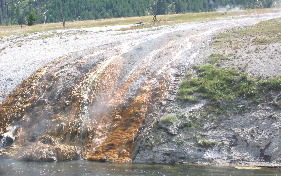
Joyce
took this picture from the road between the Firehole River and Old Faithful as
the road passes the Lower, Midway and Upper geyser basins, which include geysers,
hot springs, mud pots and steam vents. Super hot water gushing from these "vents"
is flowing to Iron Spring Creek that flows into the Firehole River a few miles
away.
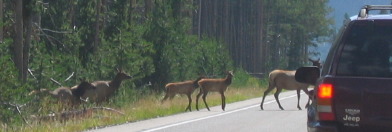
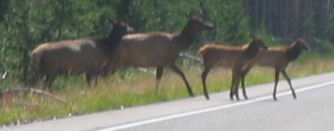
These
elk caused an "elk-jam" for a few minutes. It was welcome since we did
not see many elk today.
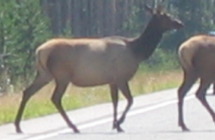
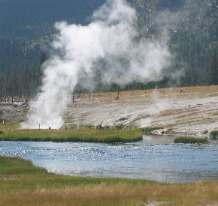
After
the elk-jam we stopped for a short while at Old Faithful. It seemed like an obligatory
stop. We also visited the Inn. It was a warm day and they didn't have the huge
fireplace in operation. What a disappointment.
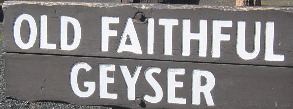
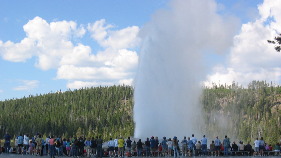
We
stayed and watched Old Faithful perform then we headed back to our campground
in the Tetons.
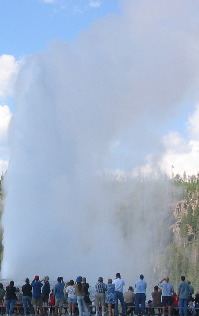
As
always a large group of people gather to watch Old Faithful. I think it is impossible
to visit Yellowstone without stopping by to view Old Faithful.
Until
next time remember how good life is.
Mike & Joyce Hendrix